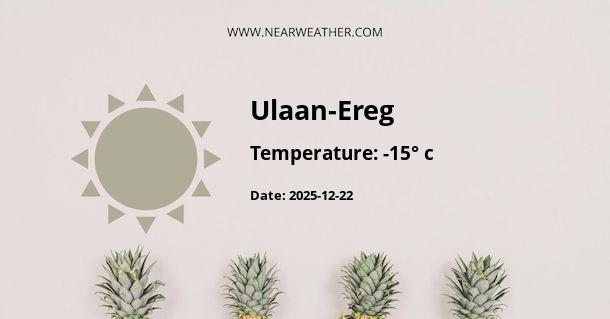Climate and Weather in Ulaanbaatar, Mongolia
Ulaanbaatar, the capital city of Mongolia, experiences a continental climate characterized by long, cold winters and short, warm summers. Situated in the heart of the country, Ulaanbaatar is known for its extreme temperatures and fluctuating weather patterns throughout the year.
Temperature
The temperature in Ulaanbaatar can vary greatly between seasons. Winters in the city are bitterly cold, with average temperatures ranging from -20°C (-4°F) to -30°C (-22°F). In fact, Ulaanbaatar is considered one of the coldest capitals in the world. The city experiences prolonged periods of sub-zero temperatures, often lasting from November to March.
Summers in Ulaanbaatar, on the other hand, are relatively short but can be quite warm. Average temperatures during the summer months, from June to August, range from 20°C (68°F) to 25°C (77°F). However, it is important to note that temperatures can occasionally reach as high as 35°C (95°F) during heatwaves.
Precipitation
Ulaanbaatar receives most of its precipitation during the summer months, with June, July, and August being the wettest months of the year. The annual average precipitation in the city is around 300-400 mm (11.8-15.7 inches). Most of the precipitation comes in the form of rainfall, although occasional snowfall can occur during the colder months.
Winter in Ulaanbaatar is generally dry, with very little precipitation. However, the city experiences occasional snowstorms, which can lead to heavy snowfall and blizzard-like conditions. These snowstorms, known as "zud," can cause disruptions to daily life and transportation in the city.
Wind
Ulaanbaatar is known for its strong winds, especially during the winter months. The city is situated in a region where wind patterns are influenced by the Siberian High, resulting in frequent gusts of wind. The average wind speed in Ulaanbaatar is around 15-20 km/h (9-12 mph), but it can reach higher speeds during storms. The wind chill factor during winter can make the already low temperatures feel even colder.
Sunshine
Ulaanbaatar enjoys abundant sunshine throughout the year, with an average of 280 sunny days annually. The city receives approximately 2,700 hours of sunshine per year. However, during the winter months, the days are shorter, and the city experiences fewer hours of daylight.
Extreme Weather Events
Ulaanbaatar is prone to extreme weather events due to its continental climate. In addition to the severe cold during winter and occasional heatwaves during summer, the city can also experience dust storms, known as "kharaa," during the spring months. These dust storms are caused by strong winds picking up dry soil and sand from the surrounding steppe and desert regions.
Conclusion
Ulaanbaatar, Mongolia's capital city, experiences a continental climate with long, cold winters and short, warm summers. The city is known for its extreme temperatures, with winters being bitterly cold and summers being relatively warm. Ulaanbaatar receives most of its precipitation during the summer months, while winter is generally dry. The city is also known for its strong winds, abundant sunshine, and occasional extreme weather events such as dust storms. Understanding the climate and weather patterns in Ulaanbaatar is essential for residents and visitors to prepare for the varying conditions throughout the year.
A - Ulaan-Ereg's Latitude is 46.900002 & Longitude is 109.750000.
A - Weather in Ulaan-Ereg is 7° today.
A - Climate Conditions in Ulaan-Ereg shows few clouds today.
A - Humidity in Ulaan-Ereg is 36% today.
A - Wind speed in Ulaan-Ereg is 14.62 km/h, flowing at 262° wind direction. today.
